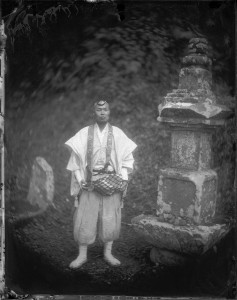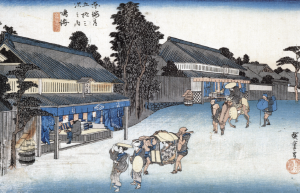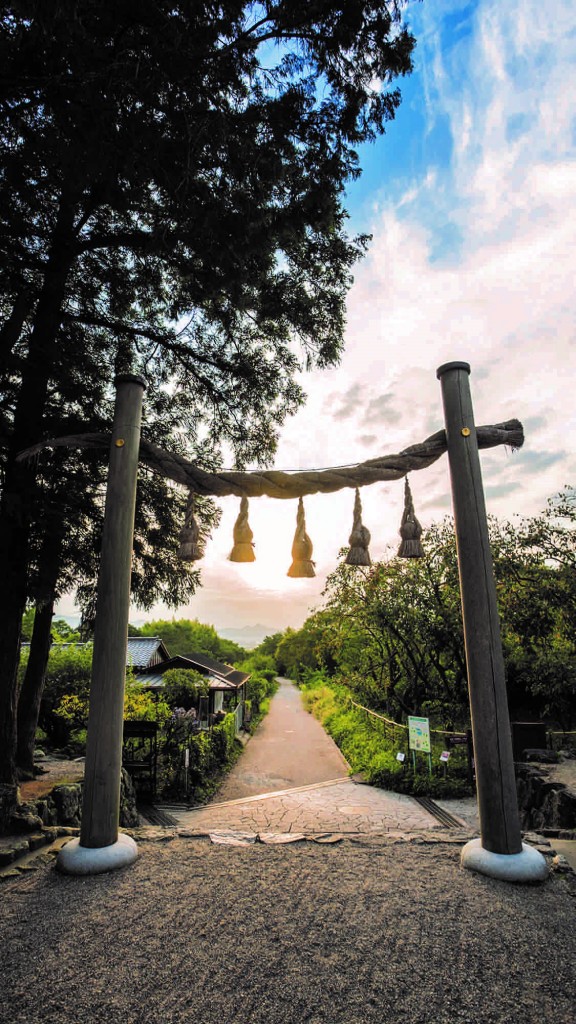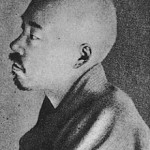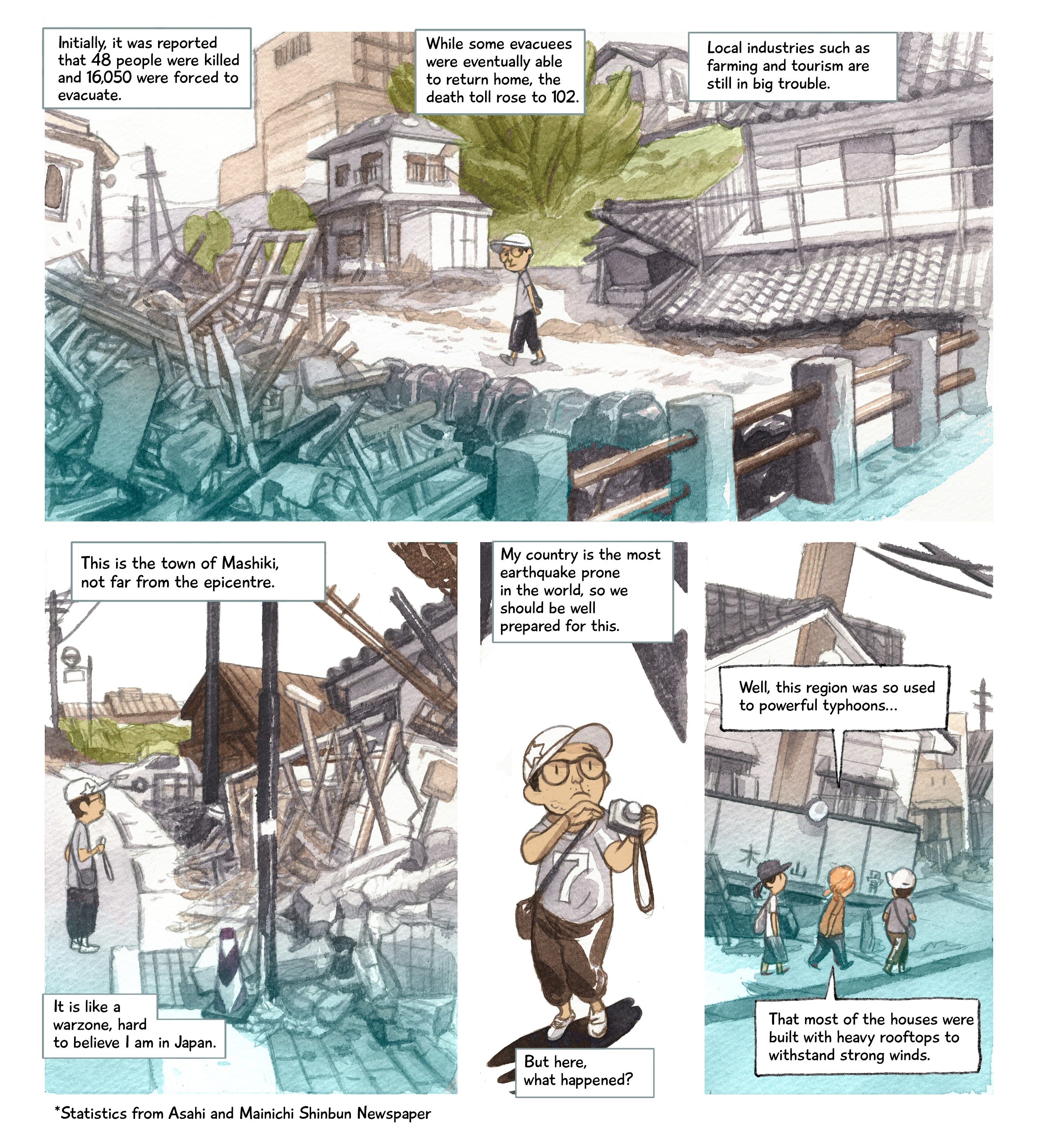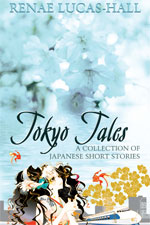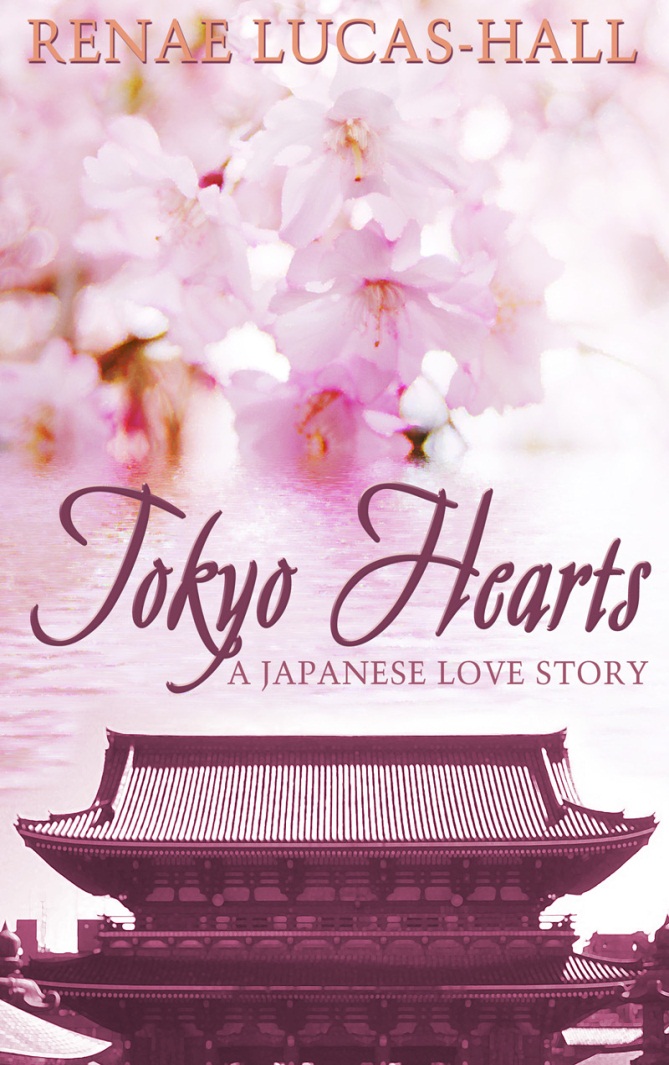I’ve read quite a few Japan-related magazines and I’ve always learned a little bit more about the Land of the Rising Sun from each one of 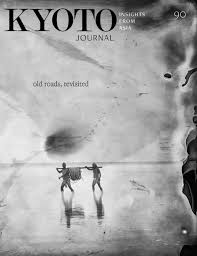 them but Kyoto Journal is the most insightful and beautifully presented magazine I’ve read so far. The stylish front cover, the glossy pages with stunning photographs and the thought-provoking essays, projects and reviews from a selection of writers, poets, artists, photographers, and designers from Japan and the Pan-Asian region will leave you spellbound. Each page really does give you pause for thought and contemplation.
them but Kyoto Journal is the most insightful and beautifully presented magazine I’ve read so far. The stylish front cover, the glossy pages with stunning photographs and the thought-provoking essays, projects and reviews from a selection of writers, poets, artists, photographers, and designers from Japan and the Pan-Asian region will leave you spellbound. Each page really does give you pause for thought and contemplation.
It was very nice to see how every part of the journal had been brought together to make you feel like you’re making a personal connection with each one of the contributing creative individuals. There’s definitely a focus on Japan, and especially Kyoto, but the editors have also included works from all over Asia and this creates an even balance. After you’ve finished reading each page you feel like you’ve cultivated your mind, heart, spirit and soul. You’re left with a feeling of completeness, inclusion, and a better understanding of Kyoto and the wider world.
I’ve only ever lived in Tokyo and I’ve visited Kyoto, Nara, Kobe and Osaka several times in the past but now I regret the fact I’ve never had the opportunity to live in the Kansai region, especially Kyoto. Frankly, I’ve always thought this ancient capital was a bit too mysterious and esoteric for my Western mind and nature. An enchanting place with a history I could never fully understand or appreciate because I wasn’t born in Japan. However, I now feel Kyoto is much more accessible after reading just one edition of Kyoto Journal.
Founded in 1986, Kyoto Journal (KJ) is a Kyoto-based non-profit, volunteer-driven quarterly magazine and the longest-established independent English publication in Japan. Every part of this journal is well-worth reading, even the advertisements and promotions are beautifully composed with stunning photos and images. Do take your time to appreciate each paragraph as you read each one. There’s a lot to take in and you’re bound to have more than one naruhodo moment!
I read the winter/summer 2018 edition with the theme “Old roads, revisited”. There’s a wonderful introduction to this issue on their website:
“KJ’s 90th issue celebrates those roads that, since prehistory, have carried not only travelers and trade, but also the seeds of new cultural flowerings. Passing through both time and terrain, roads lead to that ongoing reinvention, the future—and back into the past.
Climb aboard; let’s make tracks…”
I’d like to share with you some of the highlights of this journal. . .
I enjoyed reading the interview with the professional Noh actor, teacher and Noh mask carver Udaka Michishige (pictured below performing “Nonomiya” at Kyoto Kanze Kaikan Noh Theater wearing his Magojirō mask). He’s the only performer still making Noh masks in Japan. I now know the word Sarugaku is the ancient name for Noh (yes, even if you’re an expert on Japan you’re still going to learn all sorts of cultural titbits from this journal) and it was wonderful to read about the ways Mr Udaka is trying to transform the educational system in Japan. He believes in teaching children the importance of spirituality and philosophy. He says we should all question why we were born, live and die just as one does in Noh theatre. He insists these subjects should be taught alongside factual knowledge in order to create more well-rounded individuals and I agree with him.
There are also extracts in the journal from Unbeaten Tracks in Japan by Isabella Bird as well as a very well-written review of Pachinko by the author Min Jin Lee. I’ve read these two books and I recommend both of them but I thought Bird’s non-fiction account of Japan in 1878 was a bit tedious to read at times and sometimes it felt like the text was too heavy in its descriptions (I’m talking about the complete book, not these excerpts).
Back to the journal, I thoroughly enjoyed reading the extract from the travel journal The Kaidōki which was written by a 12th-century monk (name unknown) and translated by Meredith McKinney. The inclusion of tanka poetry and the photo (see below) of this monk in an area not far from Kamakura makes these pages a delight to read.
The narrative of a Zen monk called Fukume on a mission from the Shogun in 1832 to deliver a white horse to the Emperor in Kyoto will also make you smile. What amused me the most was how Fukume and Hayashi were repeatedly trying but failing to recite a poem on their journey in just one breath because it was said if you could do this “while giving proper attention to its sense you would have happiness and success in love for the rest of your life”!
Andrew Thomas moved to Kyoto after spending 15 years in Setagaya, Tokyo. Interestingly enough, I lived in Yōga in Setagaya when I was teaching English in Japan. If I’d continued my life in Japan I probably would have followed suit and moved to Kyoto myself. Don’t you think his photo below of the Shimenawa torii gate at Hibara Jinja, featured in Kyoto Journal, is absolutely mesmerising?
I very much enjoyed reading about how Yamada Akihiro developed the Kamo River Promenade in Kyoto. He embraced the concepts of continuity and unity in his designs because he wanted everyone in the area to enjoy the promenade. Now people can walk, stand, sit and lie down along the river bank and take time for contemplation thanks to Yamada’s well thought out designs. His philosophy in life is “kindness must be the basis for all human activity”.
If Yamada Akihiro happens to meet the photographer Yoshida Shigeru, whose ethereal photos also feature in this journal (see photo below), I’m sure they’ll get along. Yoshida began his photographic project ‘Border’ after visiting the area stricken by the 2011 Great East Japan Earthquake. When he saw the people praying towards the sea he knew exactly what he wanted to capture in his photos and he remembered these words the Dalai Lama once said: “This place doesn’t need more successful people. The planet desperately needs more peacemakers, healers, restorers, storytellers and lovers of all kinds.” Inspirational words from both gentlemen, don’t you think?
If you’re interested in Japan it’s more than likely you’ve heard of Matsuo Bashō, considered the most famous poet of the Edo period, but have you ever seen a picture of the man himself? You’ll have to order a copy of this edition of Kyoto Journal if you’re interested in seeing what is said to be the most authentic portrait of Bashō to date.
Nearly everyone who visits Japan is filled with awe by the beauty of the aesthetics which apply to design, physical objects or daily principles and they never forget the kindness they’ve received from the Japanese people. One of the best ways to immerse yourself in the traditional culture is to stay at a ryokan inn or a hotel that prides itself on providing exemplary customer service. In ‘Going off road: a home away from home in Japan’ Lucinda Cowing introduces four hotels where omotenashi is a prerequisite for a restful stay. You’ll want to book at least one of these fine establishments after reading this and if you do I’m pretty sure you can look forward to being pampered and spoiled by their staff who all seem to understand the true meaning of omotenashi.
Although it’s a hotel rather than a ryokan, I’d love to stay at L’Hôtel du Lac which was highly recommended by Cowing. It’s situated on the shores of Lake Biwa in Shiga Prefecture. This retreat boasts both lake and mountain views, it sits in a forest thriving with birds and local wildlife, and in early April cherry trees stretch for 8km alongside the property (see photo below). The Director of L’Hôtel du Lac, Tanaka Hidekazu, explains why his hotel has so much to offer. “Our hotel’s location, together with its sumptuous cuisine, is the highlight of staying here. It is a special place, yet it is important to us to make guests feel that they are ‘coming home’ and to be an approachable and reliable presence for them.”
There’s also a selection of poignant and very touching poetry throughout the magazine for you to read over and over again. One poem, in particular, really moved me from A House of Itself, Selected Haiku by Masaoka Shiki:
Autumn departs
for me
no gods no buddhas
行く秋の我に神無し佛無なし
yuku aki no ware ni kami nashi hotoke nashi
— Masaoka Shiki
There was a lot to learn about Masaoka Shiki, pictured below (image via Wikipedia), in this journal. He was a traditionalist and an innovator in the Meiji period who wrote over 25,000 haiku poems in his short life. He used seasonal references as well as shasei (sketching from life) and makoto (poetic truthfulness) in his haiku but unfortunately he died at age of 35 from tuberculosis, a disease he contracted when he was just 13. As you can see above his poetry is deeply influenced by his sense of mortality.
I also want to draw your attention to the Hailstone Haiku Circle. I’d never heard of this club before but I discovered they have members all over the world. If you’re interested in joining this circle there’s no need to feel intimidated and you don’t need to be a haiku master to get involved. Their latest anthology Persimmon was reviewed by Susan Pavloska. The haiku below is a perfect example of what you can expect:
An orange colour
rises in the moonlight
ripe persimmons
—Mayumi Kawaharada
The number of people who enjoy reading Japanese manga comics in the West, especially in Britain, has multiplied exponentially since the 1970s and now this art form has become a hugely lucrative export for Japan. Fumio Obata, a Japanese comic artist living in the UK, has been working on a 200-page graphic novel dedicated to comic reportages of the 2011 tsunami, earthquake, and the consequential nuclear accident in Fukushima. Kyoto Journal has dedicated four pages to her comics. Prepare yourself to be enthralled by Obata’s artistic accomplishments but also saddened by the subject matter.
If you’re a foodie you’ll also enjoy ‘Gourmet Biking in Tohoku’ by Lianca Van Der Merwe, if you’re a fan of kimono you’ll be interested in the article explaining how the textile artist/kimono-maker/tonya (creative director) Tange Yusuke is exhibiting artwork alongside his stunning kimono dyed with the same imagery, and if you’ve ever lived in suburban Nara in Japan or Oxfordshire in England you’ll relate to Pico Iyer’s ‘The Gingkos along Park Dori’.
There’s also a heart-wrenching but life-affirming short story called ‘Mother beyond the border’ by Muhammad Nasrullah Khan (with wonderful artwork by Venantius J Pinto) that needs to be read to be believed. I can assure you it will leave you with eyes wide open.
Just as springtime is drawing to a close in Japan this edition of Kyoto Journal ends with a very sweet haiku:
High on the cherry tree—
one last blossom
remembers
I wasn’t brought up to be a Buddhist or a Shintoist (although I agree with some of the principles from both religions) so I tend to believe we only have one life and this life passes incredibly quickly. Following this train of thought, we only have a certain amount of time to do what we wish to do, absorb ourselves in our passions, and follow our dreams. I’m really looking forward to reading more editions of Kyoto Journal in the future. I feel that the content in this magazine will accelerate my understanding of this ancient capital and many other facets of the Japanese culture.
I now feel like I can enrich my knowledge of matters I once thought were incomprehensible and when I return to Kyoto I’ll have a much better understanding and appreciation of this captivating city and Japan as a whole. Reading personal accounts from both Japanese and Western people, past and present, who now live or have lived in Kyoto, I really feel drawn towards this area of Japan. You can certainly feel the warmth, kindness and compassion for others when you read the contributions from those who have a real connection with this charming city.
…………………………………………………..
SAVE up to 50% when you subscribe to Kyoto Journal: the award-winning magazine bringing you Insights from Asia https://t.co/ZGNOMjwrMt pic.twitter.com/Vd8bfg3AKU
— Kyoto Journal (@kyotojournal) March 27, 2018










